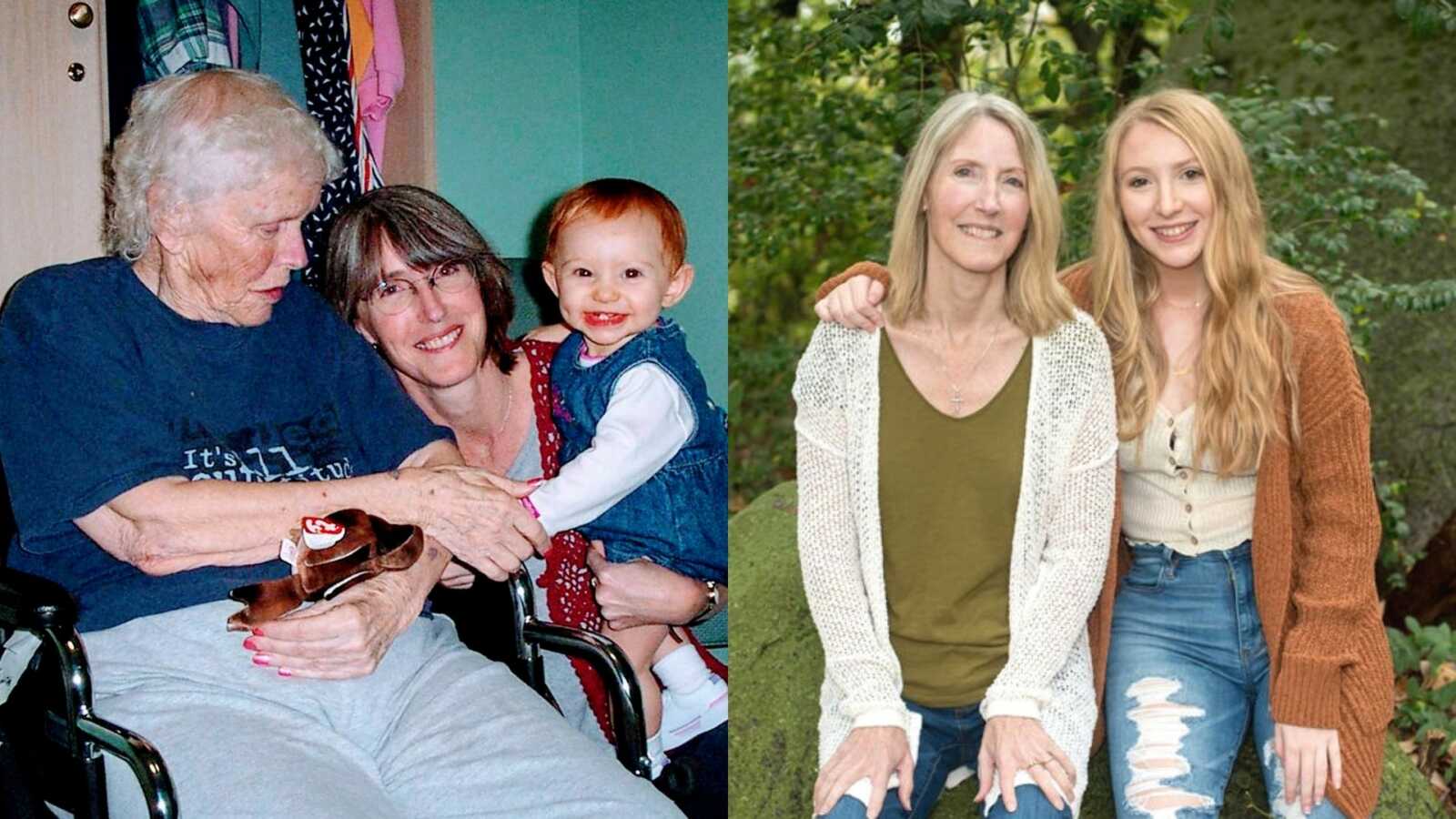“I never dreamed that celiac and Alzheimer’s disease would intersect in my life at the age of 40. That’s when I became a mom while I was also caring for my mother who was suffering from dementia. My mother began forgetting things when I was in my early thirties, and her disease escalated over the years as I struggled through a series of miscarriages. Finally, after turning 40, I became pregnant, and my husband and I were blessed with a beautiful baby girl named Sydney.
I was thrilled to be able to share my daughter with my mother, even though Mom no longer knew my name. Somehow, she understood that Sydney and I were part of her family. I took my little girl to visit my mother at her care home whenever I could, and Sydney brought laughter and smiles to my mom’s face.
But it was a difficult time as I knew my mother was gradually slipping from this life. I was filled with a heightened awareness of the beauty of each moment. I wanted to appreciate time with my mom as well as bathe myself in the glow of my precious little girl. But Sydney seemed to cry more than most babies.
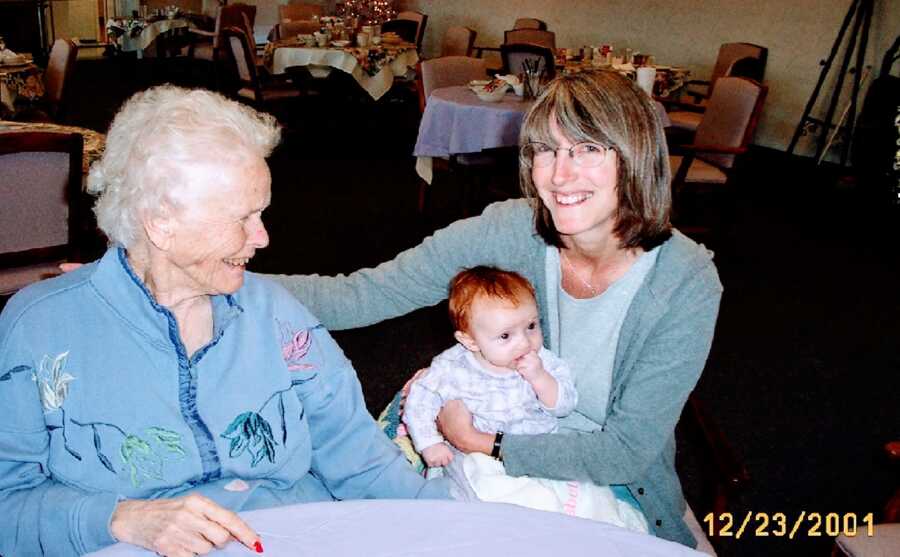
I felt her cries throughout my body. The sound coursed through my veins, and every part of me wanted to soothe her. I would stroke her damp hair and petal-soft skin, trying to bring peace to her. I sensed that her cries might be associated with physical pain, something she couldn’t yet verbalize. It was different from the cries that came when she was wet or hungry, tired or scared. When she felt good, Sydney was so full of joy; it overflowed to everyone around her.
But when she was uncomfortable, it was as if something was shadowing the sunny part of her. Looking back, I now know that her digestive tract was inflamed with celiac, and it likely became a low-level irritant that muted her joy.
By the time Sydney reached the age of two, she barely registered on the growth chart. She complained of intense stomachaches after eating breakfast and rarely napped. In fact, it was unusual for both of us to sleep through the night. I chalked my insomnia up to being pulled in multiple directions with my caregiving roles. I worried daily about my mother. Was she eating enough? Would she recognize me today? Were the staff being kind to her? Mom also had a series of falls that landed her in the hospital, which meant I was stretched even further.
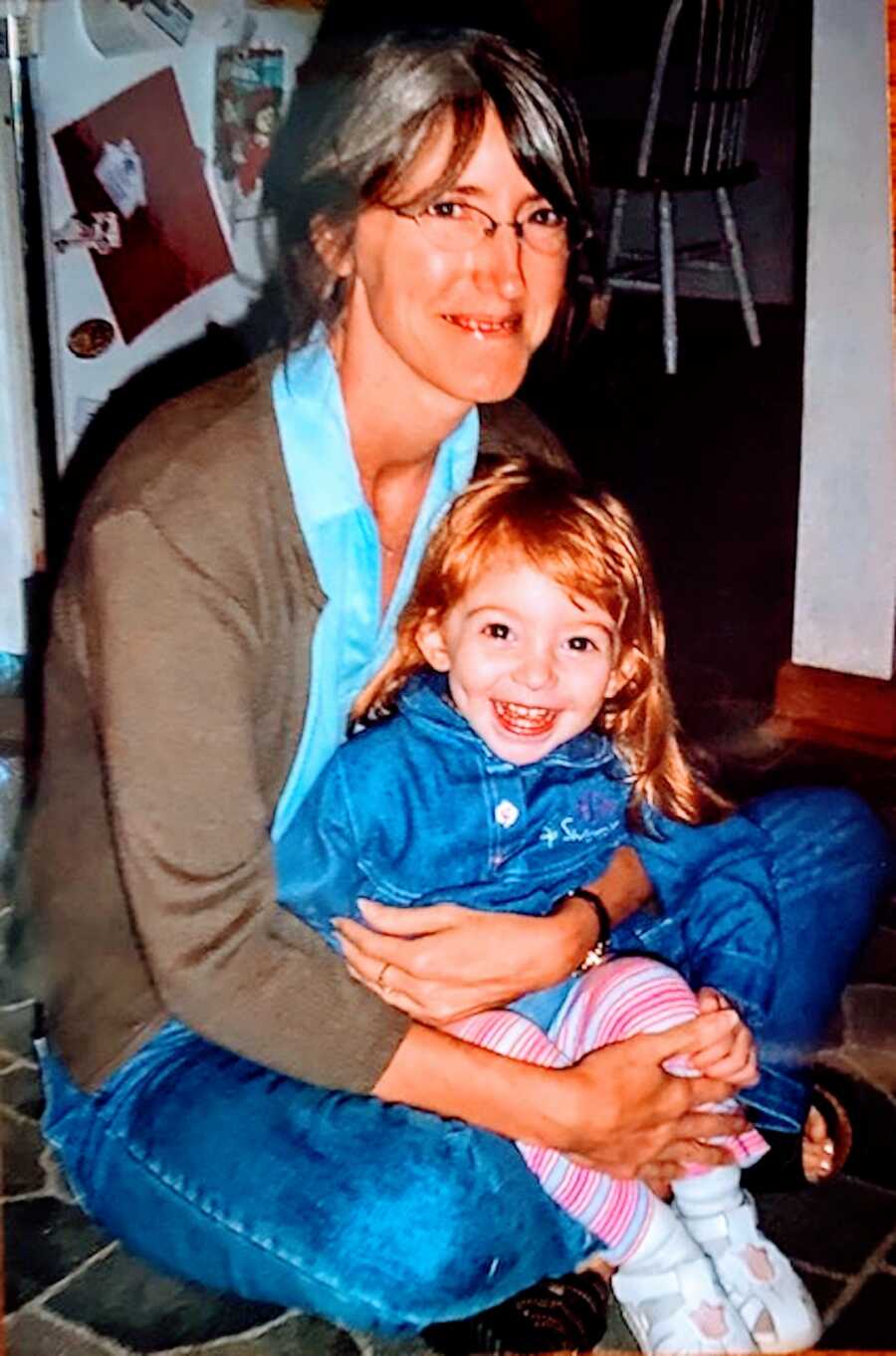
I didn’t know what to think of Sydney’s inability to sleep and her slow growth. She also developed severe constipation. If my mother had been well, she was the one to whom I would have turned. Was Sydney reacting to my stress? Her symptoms seemed to be related to her diet. I took Sydney to the doctor regularly and pleaded for answers, but the medical staff, along with well-meaning friends, repeatedly assured me that Sydney would outgrow her issues.
Through her toddler years, Sydney continued to cry through the night, and her growth basically stalled out. Her arms and legs were thin, but her stomach was extremely bloated. There were nights she would eat dinner then turn to me and beg for more. Within a few minutes, she would down another complete meal. This confused and confounded me. I felt like the walking dead after enduring years of interrupted sleep and the stress of worrying over both my mother and my child. I continued to ask doctors for help, but my concerns were dismissed, rejected, even ridiculed, at times.
Finally, at the age of five, Sydney received a diagnosis of celiac disease. Her blood tests had been inconclusive, but a specialist who listened and heard my concerns about her health suspected celiac. He sent us to a pediatric gastroenterologist where Sydney had an endoscopy. The procedure revealed severe scarring in her small intestine, which the doctor confirmed was a clear sign of celiac.
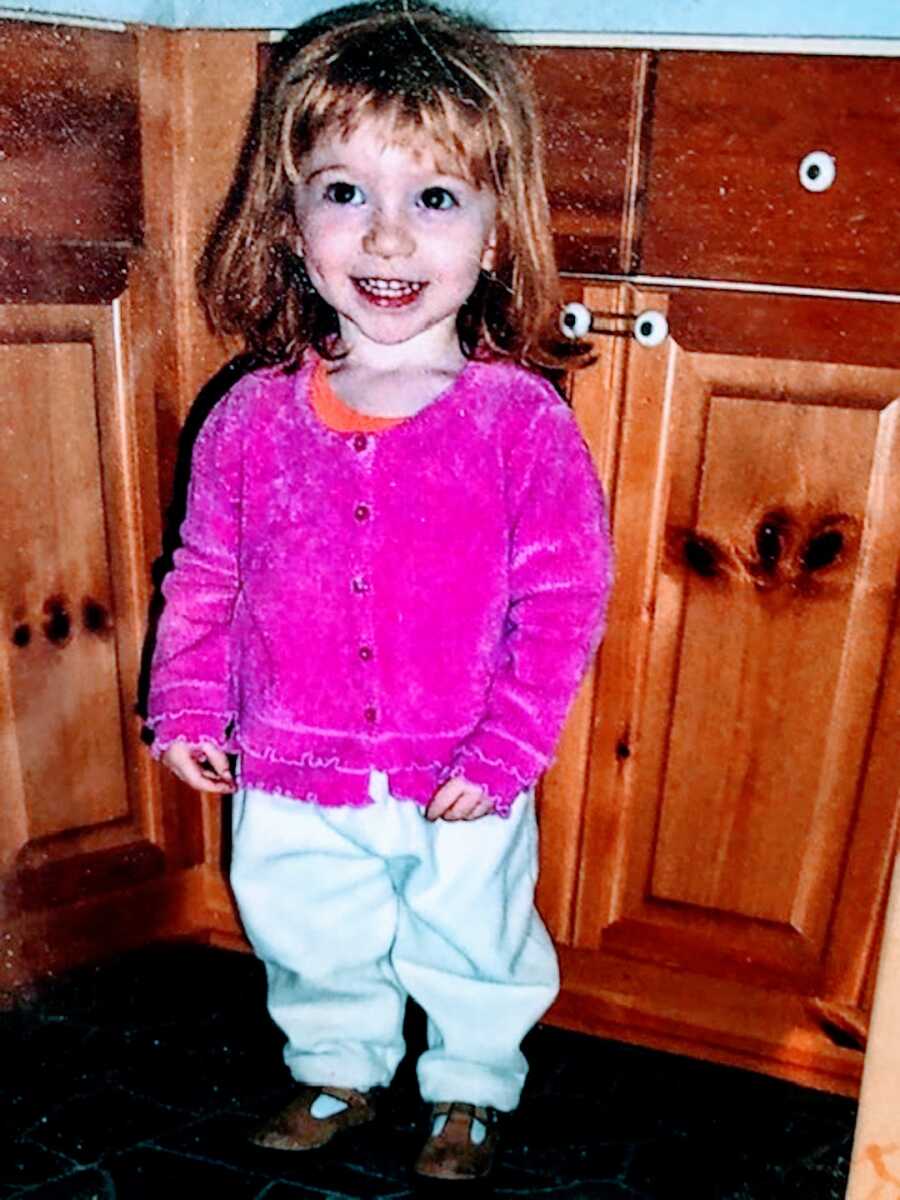
He explained that when Sydney ate gluten—the protein in wheat, barley, and rye—it set off an immune response in her body which caused it to attack itself. The villi lining her intestine had been worn smooth, so her body was unable to absorb nutrients. This is why she was small, why her hunger was so ravenous, and why she wasn’t sleeping. She had literally been starving because the food she ate wasn’t nourishing her.
The mix of emotions I felt upon hearing the doctor’s diagnosis was overwhelming. I was dizzy with relief and affirmation after all the weeks and months of struggling to understand what was wrong with my daughter’s health. I had been right. There was something. This was real. Yet, my poor child had suffered, unnecessarily, for too long. If I knew in my gut something was wrong, why hadn’t I been able to catch it, fix it, save her from so much pain? Had I been too preoccupied with caring for my mother? Possibly.
But there was nothing to do but move forward. Now I knew what the problem was. I could begin to help Sydney. My body itched to go out and banish every crumb of wheat and gluten in her world so the healing process could begin!
However, as a noncook (like my mother), this was not an easy proposition. I had to learn a new way of eating from the ground up. At least eighty percent of the food our family ate regularly—bread, cookies, pasta, cake—was suddenly off-limits.
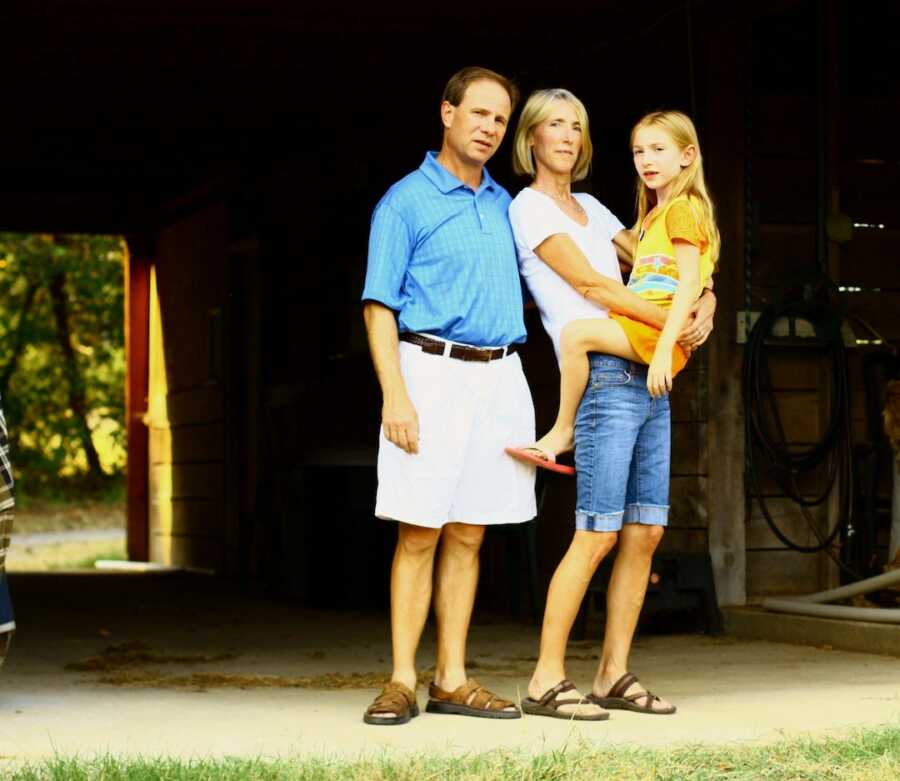
As soon as we got home from the hospital, I threw myself into clearing out our pantry. Over time, I met with a dietitian who guided me through the early stages of changing our diet. Fifteen years ago, there was very little awareness of gluten-free food. So, I spent hours reading labels in the grocery store, looking for words that might denote the presence of gluten.
Learning to cook was a challenge in itself. If Sydney was going to eat anything similar to what her friends were eating—pizza, biscuits, cake—I had to figure out how to make it without wheat. There were plenty of fails along the way. That, along with the grief of having to give up our usual treats and family traditions revolving around meals, made the first year particularly difficult. Gradually, as time went on, I realized Sydney’s diagnosis was a blessing. My husband and I discovered our own gluten intolerances, and all of us began eating healthier.
Sydney grew several inches the summer she gave up gluten. Her sleeplessness vanished the very first day she took up her new dietary restrictions, and her stomach aches and bloating gradually disappeared.
As my daughter’s health improved, my mother’s condition declined. Her Alzheimer’s brought her to a place where she could barely speak and could no longer walk. She passed away a little more than a year after Sydney’s diagnosis. Celiac disease is a genetic condition, and I couldn’t help but wonder if my mother might have had it throughout her life. Alzheimer’s and celiac are both autoimmune conditions, and it was conceivable that if she had celiac disease and had been on a gluten-free diet, she might have lived several more good years with a clearer mind.
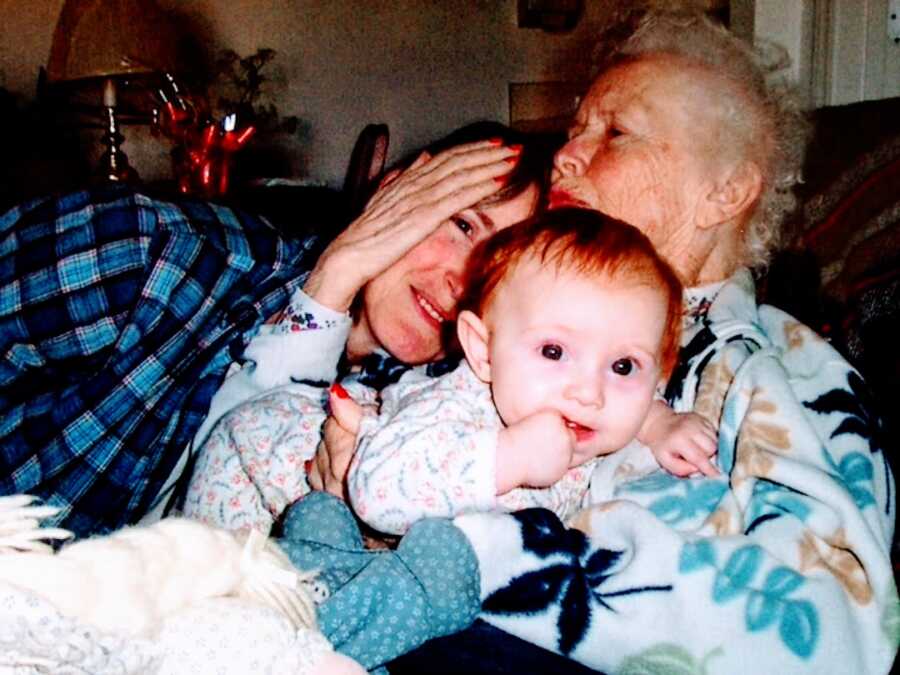
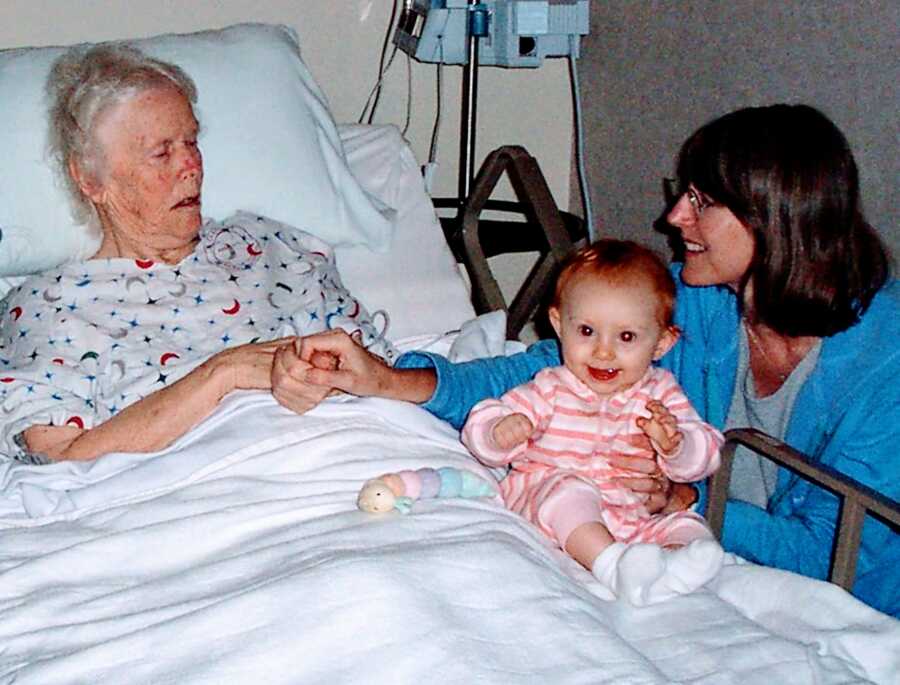
As a magazine and newspaper journalist, I made the decision to share my story as I was moving through it. I had spent much of my career writing other people’s stories, and I believed the challenges I faced could help others. My memoir, Motherhood: Lost and Found, which tells the story of my mother’s descent into Alzheimer’s while I was struggling to become a mom, was published after my mother passed away.
Ever since my mother developed Alzheimer’s disease, I’ve been an advocate for those dealing with dementia caregiving. A few years ago, I was invited to become a Manager and Director of AlzAuthors.com, an organization near and dear to my heart because it provides resources and over 300 books and blogs to caregivers of those with dementia. I was also honored that Motherhood: Lost and Found was named one of the ‘Best Alzheimer’s Books of All Time’ by Book Authority two years in a row.
My second memoir, Celiac Mom, follows Sydney’s early symptoms and takes the reader through her diagnosis and our family’s transition to a gluten-free lifestyle. I share the many challenges we faced and how we overcame them. After watching my daughter struggle through her early years, I believed her story could help others who were searching for a diagnosis.

After Celiac Mom was published, I was pleased it was named a Finalist and Recommended Read by Indies Today. In 2020, I started my Instagram account @glutenfreeforgood to spread awareness of celiac disease. It has gained over 2500 followers since last year.
Alzheimer’s and celiac continue to impact me in my daily life. I make conscious decisions every day to eat healthfully, exercise, and avoid gluten, in order to increase my chances of having an engaged and vibrant future. I volunteer and reach out with advice and support to others who face Alzheimer’s and celiac.
I hope by sharing my story, others will have the courage and confidence to find the answers to their own health issues. My memoirs walk readers through my own experiences. They are a handrail for those looking for support, comfort, and encouragement. While Alzheimer’s and celiac can devastate the life of a loved one, I hope my writing helps others learn it is possible to not only survive these conditions but to thrive and live a successful, loving, and joy-filled life.”

This story was submitted to Love What Matters by Ann Campanella of Cornelius, North Carolina. You can follow her journey on Instagram, Twitter, and their website. Submit your own story here, and be sure to subscribe to our free email newsletter for our best stories, and YouTube for our best videos.
Read more stories like this:
Do you know someone who could benefit from this story? SHARE this story on Facebook to let others know a community of support is available.

